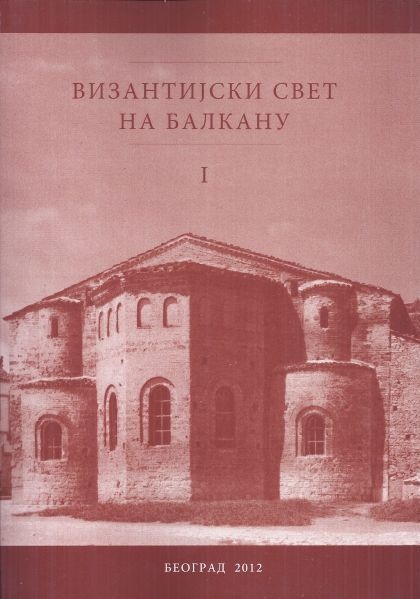Плашт српских деспота у 15. веку. Прилог проучавању
Mantle of the Serbian Despots in the 15th Century. A Contribution to the Study
Author(s): Branislav Cvetković
Subject(s): Cultural history, Visual Arts, 13th to 14th Centuries, 15th Century, Eastern Orthodoxy
Published by: Vizantološki institut SANU
Summary/Abstract: The royal portrait in the Middle Ages, as a distinctive form of imagery, the purpose of which was to emphasize the celestial origin of the sovereign's power, has been the subject of continuous research. But special attention is paid to the study of varieties when the most common form of the hieratic frontal portrait of a ruler as an "image of God" is supplemented with factors highlighting ideological messages such as success in wartime exploits, the ruler’s special position, or his humility and piety. In the Byzantine sphere of influence, the ruler is usually represented clad in a standard manner that was repeated with slight variations for centuries, the symbolism of which is very well known. The official ruler’s likeness almost always had no mantle. Since one encounters this on a number of examples of portraits of the Serbian rulers in the 15th century, one may ask why it occurred only in some cases, if it was due to the Byzantine influence, or an insignia of Western origin, or another way of displaying a ruler, bearing in mind the well known semantic potential of mantle-robes in all cultures. Recent investigations of the symbolism in medieval costume opens up new possibilities in the research of this question.
The mantle on the portraits of Serbian despots is not incompatible with the manner of representing Byzantine emperors and is one of many ways of representing royal figures in the Middle Ages, the meaning of which was to stress the virtue of a pious ruler adorned with the chlamys of meekness. Costume was a ceremonial means of discourse and almost always, whether a real garment or its representation, had a semantic potential. Portraits in a sacred context should not be referred to as the secular part of a painted programme in a church, since the rulers, the clergy and the patrons were also painted for eternity, with the idea of expressing a higher truth and hope that they were already counted among the righteous. Accordingly, the mantle occurs in those royal portraits when its commissioner wanted to stress a specific relationship between the representatives of the earthly and heavenly court, not just the idea of the heavenly origin of the sovereign’s power.
Book: Византијски свет на Балкану I-II
- Page Range: 551-566
- Page Count: 16
- Publication Year: 2012
- Language: Serbian
- Content File-PDF

